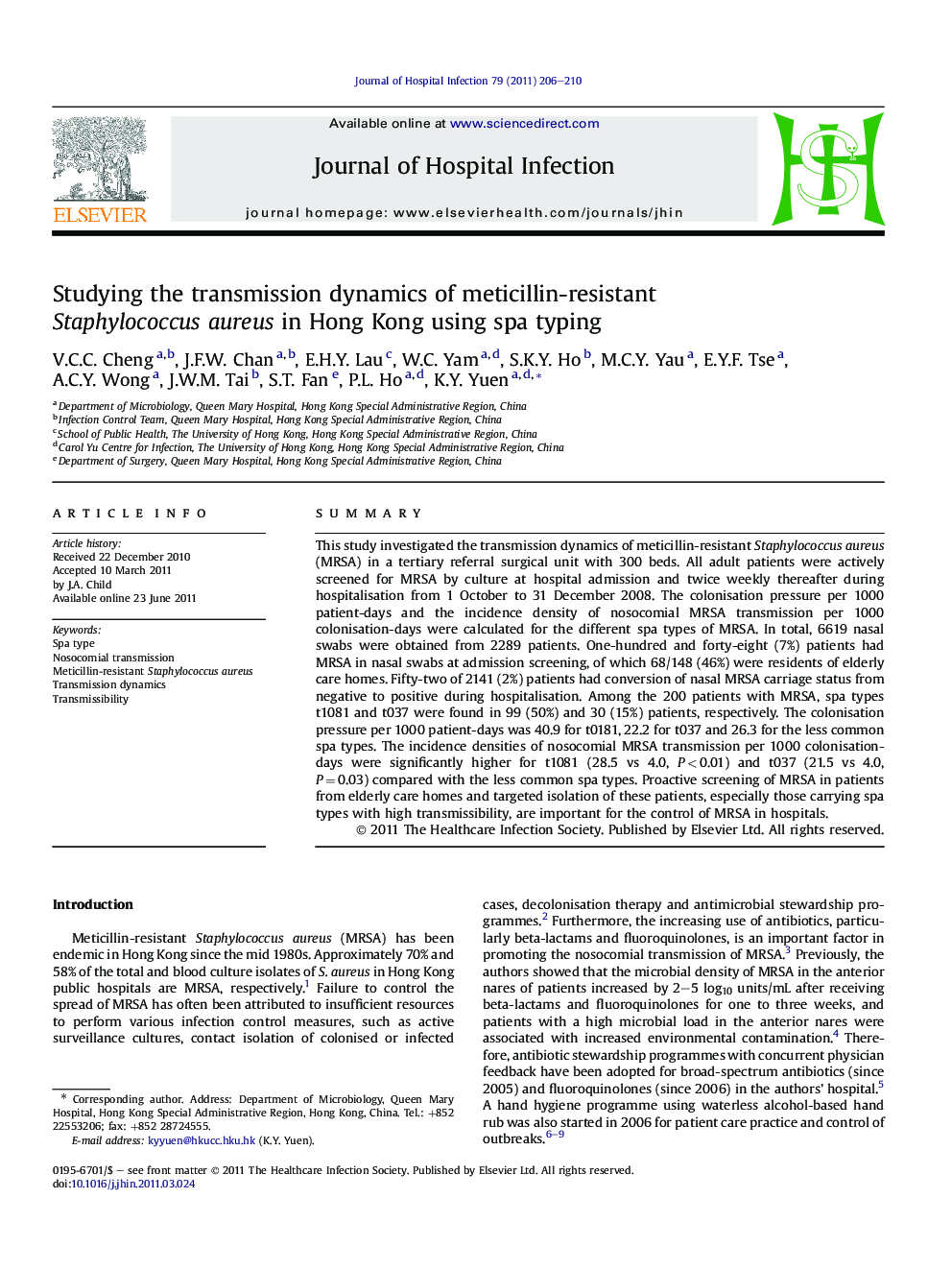| Article ID | Journal | Published Year | Pages | File Type |
|---|---|---|---|---|
| 3372084 | Journal of Hospital Infection | 2011 | 5 Pages |
SummaryThis study investigated the transmission dynamics of meticillin-resistant Staphylococcus aureus (MRSA) in a tertiary referral surgical unit with 300 beds. All adult patients were actively screened for MRSA by culture at hospital admission and twice weekly thereafter during hospitalisation from 1 October to 31 December 2008. The colonisation pressure per 1000 patient-days and the incidence density of nosocomial MRSA transmission per 1000 colonisation-days were calculated for the different spa types of MRSA. In total, 6619 nasal swabs were obtained from 2289 patients. One-hundred and forty-eight (7%) patients had MRSA in nasal swabs at admission screening, of which 68/148 (46%) were residents of elderly care homes. Fifty-two of 2141 (2%) patients had conversion of nasal MRSA carriage status from negative to positive during hospitalisation. Among the 200 patients with MRSA, spa types t1081 and t037 were found in 99 (50%) and 30 (15%) patients, respectively. The colonisation pressure per 1000 patient-days was 40.9 for t0181, 22.2 for t037 and 26.3 for the less common spa types. The incidence densities of nosocomial MRSA transmission per 1000 colonisation-days were significantly higher for t1081 (28.5 vs 4.0, P < 0.01) and t037 (21.5 vs 4.0, P = 0.03) compared with the less common spa types. Proactive screening of MRSA in patients from elderly care homes and targeted isolation of these patients, especially those carrying spa types with high transmissibility, are important for the control of MRSA in hospitals.
